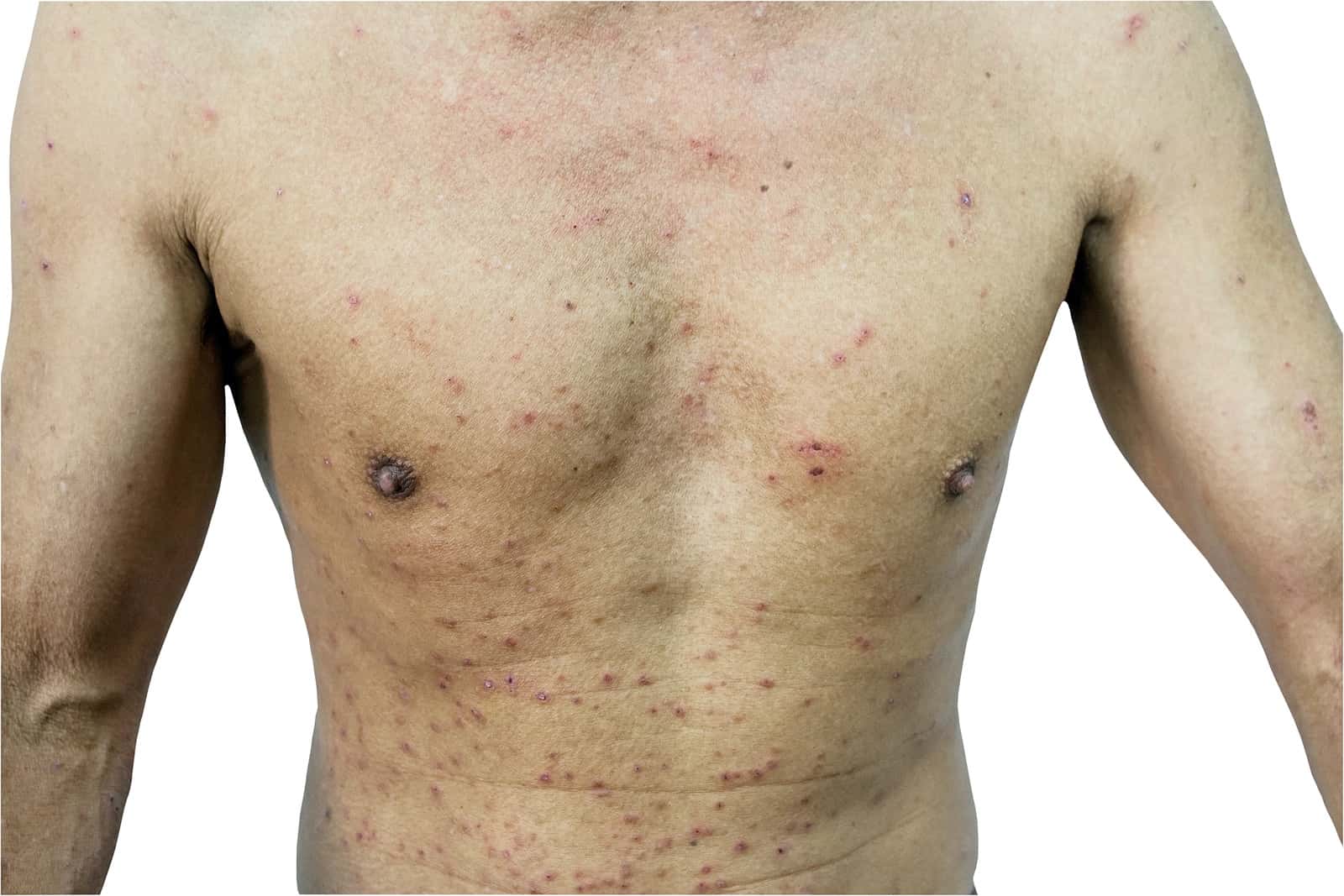
Drug side effects are often categorized as “common,” “less common,” “minor” or “serious.” For many people, skin rashes are perceived as one of the minor side effects.
That’s because many of us have had a poison ivy rash or some other seemingly minor skin annoyance such as a mosquito bite or contact dermatitis. Compared to heart failure, kidney disease or psychosis, skin rashes appear far less likely to cause serious damage. Don’t fool yourself, though. Skin rashes can be life threatening!
Stevens-Johnson Syndrome (SJS):
We would be the first to acknowledge that many skin rashes are not dangerous. A new soap or shampoo might have an ingredient that causes contact dermatitis in susceptible individuals. Eliminate the offending chemical and the rash usually goes away.
But some drug-induced skin rashes can be extremely dangerous, if not deadly. One kind of adverse drug reaction called Stevens-Johnson syndrome (SJS) can be lethal.
Here is one reader’s story:
“I am an attorney who dealt with cases of medical mistakes. As a result, I always double-check everything (to the annoyance of my physicians). Professionally and personally, I have seen hundreds of physician or pharmacy mistakes, most dangerous, and some fatal.
“Doctors and pharmacists are overworked these days. Despite their best efforts, they just can’t learn every possible risk associated with a drug.
“One client called his doctor more than once, concerned about a significant rash while on a sulfa drug and was told to keep taking it. He wound up in the hospital burn unit with Stevens-Johnson syndrome. Ultimately, all his skin peeled off his body, and he died after days of agony.”
What Is Stevens-Johnson Syndrome?
The skin condition called SJS is usually a severe adverse reaction to a medication such as an anticonvulsant, antipsychotic, antibacterial sulfa drug, antibiotic or anti-gout medicine like allopurinol.
A nasty red rash can proceed to fever, blisters and sores in the mouth, eyes, throat and even the genitals. Other symptoms may include fatigue, eye irritation and whole-body skin pain. Eventually, the skin may peel off, which is why patients often end up in hospital burn units.
Are People Warned About Skin Rashes?
Because it is considered so rare, physicians and pharmacists may not warn patients about symptoms to watch out for.
According to one patient, a fluoroquinolone antibiotic triggered a terrible series of reactions:
“I had a horrible reaction in the hospital ER with severe hallucinations. They rushed me into the acute trauma unit. Then after two weeks, I began to develop strange blisters on my skin. I was miserable. One night I stayed up searching the Internet until I found pictures that matched my problem.
“It turns out that I had Stevens-Johnson syndrome. My dermatologist confirmed this the following day. I had to be put on a regimen of prednisone, starting with a high dose and tapering down. This is a serious condition which leads some to have to go to burn centers.”
We heard from another reader about a reaction to the antibiotic cephalexin:
“After taking cephalexin for one day for a UTI, I broke out in a rash that I later found out was Stevens-Johnson syndrome. I was burned from head to toe and from the inside out. The drug also caused nerve damage in my feet.”
Do Not Ignore Skin Rashes!
Medications can cause a great many side effects. Anyone who checks the patient insert that comes with their prescription knows this list can be daunting. Trying to figure out which reactions are serious, and which are merely bothersome can be challenging.
Doctors and pharmacists don’t usually mention complications that appear to be rare. But when it comes to Stevens-Johnson syndrome or other serious skin reactions, the idea that “it’s only a rash” could lead someone to ignore a life-threatening situation.
Drugs That Can Cause Stevens-Johnson Syndrome:*
Generic Name Brand Name
- Alendronate Fosamax
- Allopurinol Zyloprim
- Atorvastatin Lipitor
- Capoten Captopril
- Carbamazepine Tegretol
- Ceftin Zinacef
- Celecoxib Celebrex
- Ciprofloxacin Cipro
- Clavulanic acid Augmentin
- Duloxetine Cymbalta
- Escitalopram Lexapro
- Ezetimibe/simvastatin Vytorin
- Fluoxetine Prozac
- Lamotrigine Lamictal
- Levofloxacin Levaquin
- Meloxicam Mobic
- Modafinil Provigil
- Pregabalin Lyrica
- Quetiapine Seroquel
- Sertraline Zoloft
- Sulfasalazine Azulfidine
- Tadalafil Cialis
- Varenicline Chantix
- Lisdexamfetamine Vyvanse
* This is a partial list. SJS is a rare side effect with most of these medications. Nevertheless, we think people should be aware of the possibility so they can be alert for severe skin rashes if they occur.
Final Words:
Before accepting your next prescription be sure to ask about both common and serious side effects. To help you in that process we have created a free Drug Safety Questionnaire for your doctor or pharmacist to fill out. It can be downloaded at the Health eGuide section of this website.
Please share your own experience with skin rashes in the comment section below.

